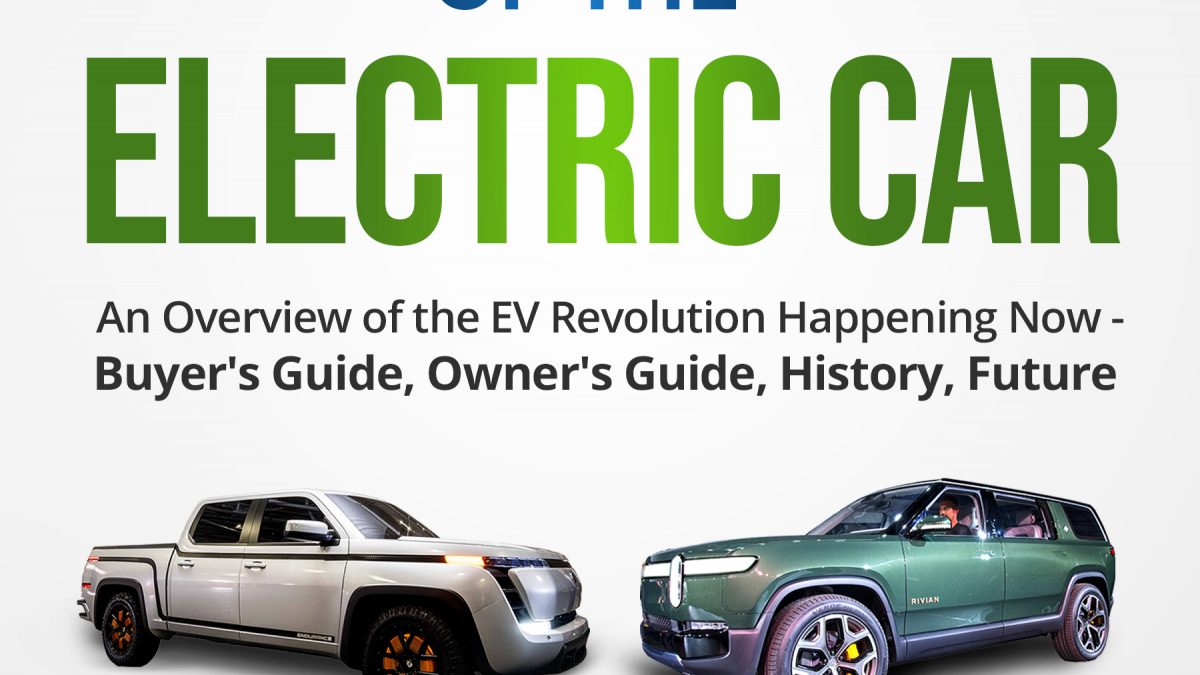
CHRIS JOHNSTON DECEMBER 2, 2020
Chris Johnston is co-author of The Arrival of the Electric Car – An Overview of the EV Revolution Happening Now.
The fastest way to shift the transportation sector to environmental sustainability is to accelerate the transition to electric vehicles (EVs). According to the United States Environmental Protection Agency, the largest source of greenhouse gas emissions is from transportation. This accounts for 28% of emissions, coming in above agriculture, commercial & residential, industry and power generation.
The average North American drives about 10,500 miles per year. Taking a national average of 25.1 miles per gallon, that equates to about 420 gallons of gasoline burned annually. In aggregate, this translates to approximately 1,870 million metric tons of CO2 equivalent expelled annually – a mind boggling number. Yes, in some cases, fossil fuels are burned to generate the electricity used to charge electric cars, but this highlights two of electric vehicles’ many advantages. They are much more efficient than gas powered vehicles and the electrical grid is getting greener.
The US Department of Energy found that electric vehicles convert about 77 percent of received electrical energy from the grid to power at the wheels. Conventional gasoline vehicles only convert between 12 percent and 30 percent of the energy stored in gasoline to power at the wheels. This makes EVs two to three times more efficient than gas-powered vehicles. So, even if electric cars are recharged with electricity generated by fossil-fuel-based sources, which is true in some cases, their motors are much more efficient at transferring that energy stored in the batteries into motion. That means much less waste and a better deal for the environment.
Gasoline engines are riddled with inefficiencies. A significant portion of the energy from gasoline is converted to unwanted heat. Open the hood after driving even only a few miles, and you’ll feel the heat. You’ll feel the loss of energy. That’s why gas-powered cars need complex and expensive radiator systems with their associated belts, pipes, and heat exchangers.
These amazing facts really shouldn’t amaze us because we often see efficiency gains when we transition from one technology to another. For example, think about common household lighting over the last decade. Compact Fluorescent Lights (CFL) use about 70 percent less energy than incandescent bulbs, the oldest technology. LED lights, the newest technology, use about 50 percent less energy than comparable CFL bulbs. Equally impressive is that the average lifespan for a bulb has improved radically from incandescent to CFL to LED technology, moving from 1,200 hours to 8,000 hours to 25,000 hours, respectively.
The second major sustainability advantage for EVs is that the electrical grid is getting greener. Powering electric cars requires both the generation and distribution of electric energy. Throughout the US, coal has been the leading source of energy for electric power generation. Recently that has changed.
Electric energy generation by renewable sources has doubled since 2008. Almost 90 percent of the increase in renewables came from wind- and solar-power generation. Both have much less environmental impact than coal, oil, or natural gas. Coal-fired generating plants are being closed as the cost of renewables has dropped below the cost of coal generation.
Wind generation increased due to taller and more efficient wind turbines. Now the US is following other countries in locating wind turbines offshore. As of 2016, wind provided 8 percent of US electric generation.
Around the world, some 3,500 hydroelectric dams are planned or are being built. However, in the US, hydro generation is at a standstill. Few dams are being built in the US, and some are being removed. In 2018, eighty-two dams were removed. Thus, the share of electric energy provided by hydropower in the US will not increase.
Dam removal is driven by the many environmental benefits it provides, such as helping to increase fish populations by opening upriver spawning grounds and allowing rich sediments to move downstream where they can be used by forests and farmland. Removal can also be driven by financial benefits. Because many US dams are old, it can be less expensive to remove them than repair them.
Electricity generated by solar photovoltaic cells has risen quickly in the US. In 2018, about four percent of the total electric energy generated came from solar panels. Two-thirds of that supply was from rooftops and other small plants.
Projecting the future is an iffy proposition, but looking ahead suggests that the future is bright for renewables. The Motley Fool combined data sources to conservatively calculate that wind and solar sources will supply almost 50 percent of the total US electricity supply by 2030. About three percent of the total electricity generation is expected to come from offshore installations, up from almost zero today. For solar, more than five percent of total generation could come from small-scale solar installations like those on residential rooftops, which are becoming cheaper and more prevalent. Adding in the contributions of nuclear power plants could bring the total share of US electricity generated by “zero-carbon” sources up from 40 percent, where it is today, to almost 70 percent in 2030. Nuclear is by no means ideal, but it is serving to bridge the gap to a zero-carbon future. The remaining 30 percent would most likely be generated by lower-carbon natural gas.

This chart shows the projected change in the percent of electricity generated by segments of renewable energy.
Exploring for oil, pumping it out of the ground, shipping it, and refining it into gasoline and diesel is an energy-intensive process. EVs will continue to get greener as the power grid gets greener. Internal-combustion engine (ICE) vehicles will remain dirty.
Are you considering buying an electric vehicle? Currently in North America, there are less than a dozen passenger EVs on the market. Next year, there will be over two dozen including a variety of new sedans, pickup trucks and SUVs. The Arrival of the Electric Car, is a comprehensive, easy-to-understand overview of the passenger EV universe including a buyer’s guide, preparing to own an EV, history and what we can expect in the future. If you are new to the EV space, searching the Internet can be a bit overwhelming. We wrote this book to be a fun, insightful guide to the fascinating world of electric vehicles.




